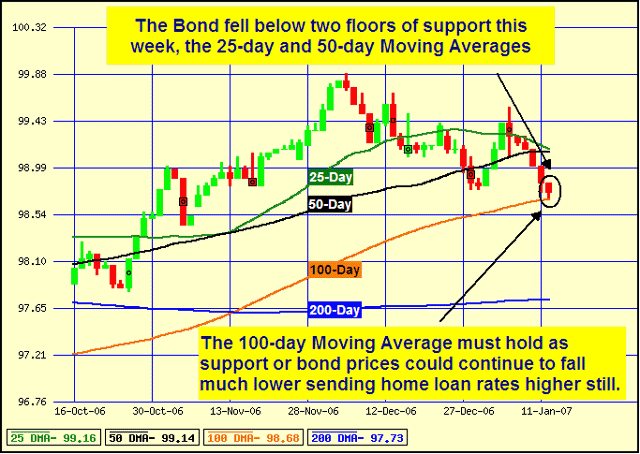Home sales fall; show faint life-signs By MARTIN CRUTSINGER, AP Economics Writer
Fri Jan 26, 6:34 PM ET
WASHINGTON - New home sales fell in 2006 by the largest amount in 16 years, but they were up for a second straight month in December, raising hopes that the worst of the housing downturn is coming to an end.
ADVERTISEMENT
The Commerce Department reported Friday that sales last month rose by 4.8 percent, following an even bigger 7.4 percent rise in November.
Those two increases, however, were not enough to salvage the entire year, with total sales of 1.06 million units, down 17.3 percent from 2005. That marked the biggest decline since a 17.8 percent plunge in the housing downturn of 1990.
On Wall Street, the Dow Jones industrial average had another down day, falling by 15.54 points to close the week at 12,487.02.
The housing bust is occurring after a boom in which sales of both new and existing homes set records for five consecutive years. The lowest mortgage rates in four decades powered a surge in sales that was bolstered by investors making purchases in hopes of turning around and reselling the properties for quick profits.
Analysts attributed the big declines in 2006 to a cooling of that speculative boom. That reversal has given the housing industry its toughest downturn since the recession of 1990.
The slowdown trimmed 1.2 percentage points off overall economic growth in the July-September quarter. Analysts are looking for an equally severe hit in the final three months of the year, with housing expected to be a continuing drag in the first half of 2007.
The downturn has meant a break for home buyers, as double-digit price gains during the boom years have slowed considerably.
The median price of a new home sold in 2006 rose by 1.8 percent to $245,300. That was far below the 9 percent price gain turned in during 2005.
David Seiders, chief economist of the National Association of Home Builders, said he looked for home prices to continue to be depressed in 2007 as builders scramble to reduce near-record levels of unsold homes.
He said his organization's January survey of builder sentiment showed continued extensive use of incentives to clear the backlog, with 60 percent of builders surveyed offering optional items such as kitchen upgrades or decks at no charge. That's up from 41 percent at the beginning of 2006.
Other incentives include paying closing costs, which 52 percent of builders said they were doing, up from 31 percent a year ago, and paying purchasers' financing points on loans, something 30 percent of builders in the survey said they were doing.
Seiders said he looked for new home sales to be essentially flat for 2007. He predicted that new home construction, which fell by 12.9 percent last year, will fall by another 14 percent in 2007.
The cutback in building has led to thousands of job layoffs in the construction industry.
The report on new homes followed a report Thursday that sales of existing homes dropped by 8.4 percent last year to 6.48 million units. That's the biggest decline in sales of previously owned homes since 1989.
New home sales were up in all parts of the country in December except the West, which posted a 4.4 percent drop. Sales rose by 27.3 percent in the Northeast, 26.6 percent in the Midwest and a much smaller 0.3 percent in the South.
Analysts cautioned that part of the strength seen in November and December could be weather-related, given the unusually warm temperatures during those two months.
In a separate report, the Commerce Department said that orders to U.S. factories for big-ticket manufactured goods rose in December by 3.1 percent, the largest gain in three months.
The increase was led by a huge jump in demand for commercial aircraft and the biggest increase in orders for cars and trucks in more than two years. That gives hope that manufacturing activity will not be seriously affected by the housing-led slowdown.
Excluding transportation, orders for durable goods posted a solid 2.3 percent increase, the best showing in this category since last March. It's also much better than analysts had been expecting.
For all of 2006, new orders rose by 7 percent, a slight slowdown from an 8.6 percent increase in 2005.
Economic growth slowed to a lackluster 2 percent in the July-September quarter, raising concerns that the steep slump in housing could trigger an outright recession.
However, in recent weeks a number of reports have shown the year ended with stronger-than-expected activity, easing worries about such a general slowdown. Many analysts now believe the overall economy grew at a respectable 3 percent rate in the October-December period, a figure that the government will release next Wednesday







